The role of sport in sustainable development
Prefer text?
Read the transcript
In Sustainability 101, you learned that sustainability is usually described as being made up of three different areas or types of sustainability: economic sustainability, social sustainability, and environmental sustainability. Let’s take a look at how sport impacts each of these three areas:
Social Sustainability
Remember that the goal of social sustainability is to protect the basic requirements needed to keep individuals and communities healthy, secure, and respected and ensure that they are available and accessible to all. Sport contributes to this goal by:
- Improving our health and fitness through physical activity
- Addressing major social issues such as inequality
- Promoting physical and mental well-being through health benefits and development and enhancement of social skills
- Uniting people from different parts of the world
- Contributing towards equality i.e., wages of professional men and women athletes
- Encouraging inclusivity i.e., Paralympics
Economic sustainability
Remember that the goal of economic sustainability is to maintain intact global communities and ensure that everyone has access to secure sources of livelihood. Sport contributes to this goal by:- Boosting local economies and communities through the creation of new jobs in the sports industry - i.e., infrastructure, broadcasting, health professionals etc., particularly surrounding large sport events.
- Having a significant positive effect on local and national economies through sport tourism for small - and large-scale sports events.
Environmental sustainability
Remember that the goal of environmental sustainability is to conserve natural resources and protect global ecosystems to support health and wellbeing, now and in the future.
- Outdoor and seasonal sports require certain weather or environment conditions to ensure an athlete’s success when training and competing, urging sports organizations to enforce/encourage conservation practices.
- Sports industries can minimize the effects of climate change through sustainable means of transportation, infrastructure, waste management, renewable energy and policies.
Major sporting events
Since 2000, there has been exponential growth in the number of major sporting events and a continued boom in the mega-event industry. Examples include the World Championship, Stanley Cup, and the Super Bowl.
Over the next decade, the Olympics and the Football World Cup will be held in a number of emerging states against a backdrop of ever-changing global risks.
The environmental consequences of hosting and attending these events range from building new stadiums, hotels, parking lots, and other infrastructure to handling the sanitation from all the toilets.
Carbon emissions that contribute to climate change are also a serious concern. Major sporting events can generate a massive carbon footprint from the activities carried out by the organizations, fans, and athletes involved throughout the different stages. For example, it has been estimated that the 2016 Rio Olympics released 3.6 million tons of carbon dioxide, while the 2018 Russia World Cup released 2.16 million tons.
Potential sources of emissions include:
- Natural resource exploitation
- Manufacturing and production
- Energy usage
- Transportation
- Waste generation
- Food production
While some organizers tout policies for offsetting carbon emissions generated by an event, those policies provide little comfort in a time when the world needs to reduce carbon emissions, not just offset extra carbon being generated by an event. Further, the offsets do not account for heaps of trash and food waste, energy consumption to power the stadium, and water consumption for toilets and irrigating sports fields.
Mega-events are frequently considered accelerators for tourism and regional development; despite having detrimental environmental and social consequences. Thus, while they may benefit economic sustainability, the environmental sustainability of these events has been a major concern in recent years.

What can you do to help reduce some of the effects on the environment?
Athletes:
- Support textile recycling and second-hand sports stores
- Ask others to develop and follow sustainability policies (including event sponsors, suppliers, etc.)
- Spread the word about the importance of sustainability
- Contribute to and support sustainability programs
- Support carbon offsets for air travel
Fans:
- Refuse single use plastic
- Recycle
- Use public transportation to reach the event
- Select sustainable hotels
- Support events that have specific sustainability policies and plans in place
Connecting sports to the UN SDGs
The 17 UN SDGs serve as a guide, calling upon all members of society to act on the most urgent economic, social, and environmental issues across the world.
The 2030 Agenda for Sustainable Development acknowledges sport as an important enabler of sustainable development, recognizing the growing contribution of sports to the realization of development and peace in their promotion of tolerance and respect and the contributions that they make to the Sustainable Development Goals.
Here are some examples of how sports can be used as a tool to advance the United Nations Sustainable Development goals:
UN SDGs
Learn more about what you can do to support each SDG and about what UNB is doing right now.
1: No poverty
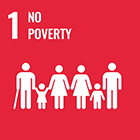
Sport initiatives can raise funds to support programs ensuring the empowerment of those living in poverty.
2: Zero hunger
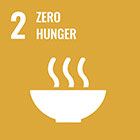
Sports can act as a tool for mobilization of resources and funds. Sport-based initiatives and campaigns can support vulnerable communities who don’t have access to adequate and nutritious foods.
4: Quality education
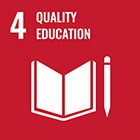
Sports can improve learning outcomes by fostering high academic performance and achievement, leadership abilities, and concentration and focus capabilities.
5: Gender equality
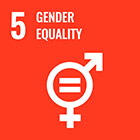
Sports can provide equal opportunities for both women and men across different levels of competition. Transferable skills gained from participation can help women to take on leadership roles in other sectors.
6: Clean water and sanitation
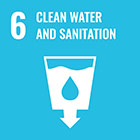
Through major sporting events, water protection programs have been implemented to raise awareness and the sustainable use of water.
7: Affordable and clean energy

Ensuring that sports infrastructure follows the latest green building standards (i.e., LEED certified facilities) promotes energy efficiency.
8: Decent work and economic growth
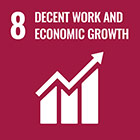
Sports can help youth build the necessary soft skills required to gain meaningful employment. Additionally, sporting events generate employment opportunities for the local community.
10: Reduced inequalities
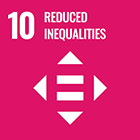
Sports promote inclusivity for both athletes and spectators. (e.g., Paralympics, programs supporting access to sports programs for at-risk youth, etc.)
16: Peace, justice and strong institutions
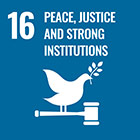
Generally, sports-based educational activities can be used to foster the reduction of violence as well as to support reconciliation activities which both allow the development of good relationships between distinctive groups of people.
17: Partnerships for the goals
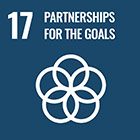
The team nature of sports has driven the sports movement to become one of the ultimate global platforms to create an influential network promoting different SDGs.
Although sports have great potential to support the advancement of the goals, it is still important to note that all sports organizations and those involved in sport must still collectively create and follow firm policies to help enforce consistent efforts across the world.
Check your understanding
This work is licensed under a Creative Commons Attribution-NonCommercial 4.0 International License.

